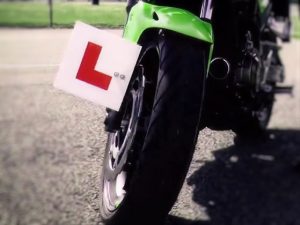How to Pass a CBT Test
CBT or Compulsory Basic Training is as the name suggests, training and therefore you cannot fail it. However, those that do not successfully complete the training will have to come back for further training before being handed a CBT certificate.

Though CBT isn’t a test, a test pass is generally considered by most candidates where they undertake the course and receive their certificate on the same day. So with that in mind, let’s look at some tips for how to pass the CBT test and to maximise your chance of receiving a CBT certificate on your first day.
CBT is a course comprising of 5 elements that’s designed to give new riders with little or no previous experience the necessary skills to ride unaccompanied on the road.
Tip 1: Research the Training School
Training schools and their instructors vary. Riding a motorcycle is a lot about safety, but to many, it’s also about enjoyment. Research the company and check out any online reviews – the last thing you want is to have a bad tempered instructor shouting at you all day. You’ll find the day much less stressful and fun if your instructor is able to have a laugh with you. In a relaxed environment, you’ll also increase your chances of passing the test on your first day.
Better still, when you have a training school in mind, pay them a visit before booking. Take a look around, chat with the instructors and get a feel for the place.
Tip 2: Check Your Eyes
Every CBT training school must legally test each candidates eyesight before commencing the course. If your eyesight isn’t up to standard, you’ll certainly not be passing the CBT course because you’ll not be able to start it.
Tip 3: Ride a Bicycle
Balance is an important skill when riding a motorcycle. If you don’t have good balance, it’s unlikely you’ll complete your CBT and will require further training. If you have lots of experience riding a push bike, then this shouldn’t be an issue, if you haven’t ask to borrow one and practice. You should practice riding:
- as slow as possible whilst maintaining balance
- one-handed whilst signalling
- maintain balance whilst looking behind
Tip 4: Revise the Highway Code
You can take CBT without passing your theory test and you can attend a CBT course as a complete novice, but you will be required to know the rules of the road. Thoroughly read the Highway Code so that your knowledge is up to standard. Element D is preparation for the final part; Element E – the on road section which lasts for at least two hours. If the instructor suspects your knowledge of the Highway Code is not up to standard, for safety reasons you’ll not be able to undertake the final on-road element.
Tip 5: Clothing
You’ll be spending most of the day outside and when riding a motorcycle, it can get cold. The last thing you want is to be more concerned about how cold you feel rather than concentrating on CBT. The best thing to do is to contact the school where you’re taking your CBT and ask them exactly what clothing they supply, what you can hire and what clothing you should take with you.
Tip 6: Get to Know Your Bike
Depending on whether you are attending the CBT course to ride a manual or automatic, you’ll have all the applicable controls explained to you for your particular motorcycle by the instructor. If you’re riding a manual transmission bike, gaining as much knowledge prior to the course will certainly prove beneficial, though not required. Have a read up on motorcycle controls so that you know where they all are and also clutch control.
If you’ve never ridden a motorcycle before, what some riders do is to take one or two riding lessons prior to taking CBT to gain familiarity with bike controls and how to operate gears and the clutch. You should be able to organise this with the same school that you will be taking your CBT with.
Tip 7: Look Where You Want to Go
This might sound obvious, but a lot of new riders will look at the floor just in front of them. If when riding you keep looking at the kerb because you’re afraid of hitting it, the chances are you will – it’s called target fixation and it’s something you want to avoid doing. Remember, look where you want to go and not where you are. Looking where you want to go is also important as it helps in spotting hazards in good time. This is something to keep in mind before and during CBT particularity for manoeuvres such as the u-turn and figure of eight.
Tip 8: Make Mistakes Safely
You’ll be attending CBT with little to zero previous experience so you will of course make mistakes. The final element E is where safety really counts as you’re out on public roads. The instructor is looking to see that you’re not a danger to yourself or other road users, so even if you go the wrong way or take the wrong exit at a roundabout, try your best to do it safely. This means checking your mirrors, indicating, shoulder checks and cancelling indicators. As long as you’re safe, you should be good for a pass.
Being Nervous about the Day
Being nervous is normal, but you will find that with a good school, you’ll feel comfortable and relaxed in no time. It’s always good to try and prepare as much as possible, but CBT is designed for total novices and you’re not expected to know anything other than the Highway Code.
The key really is to listen, have fun and when you make mistakes, don’t get stressed and dwell on them. You’ll be given plenty of opportunities to try again.
